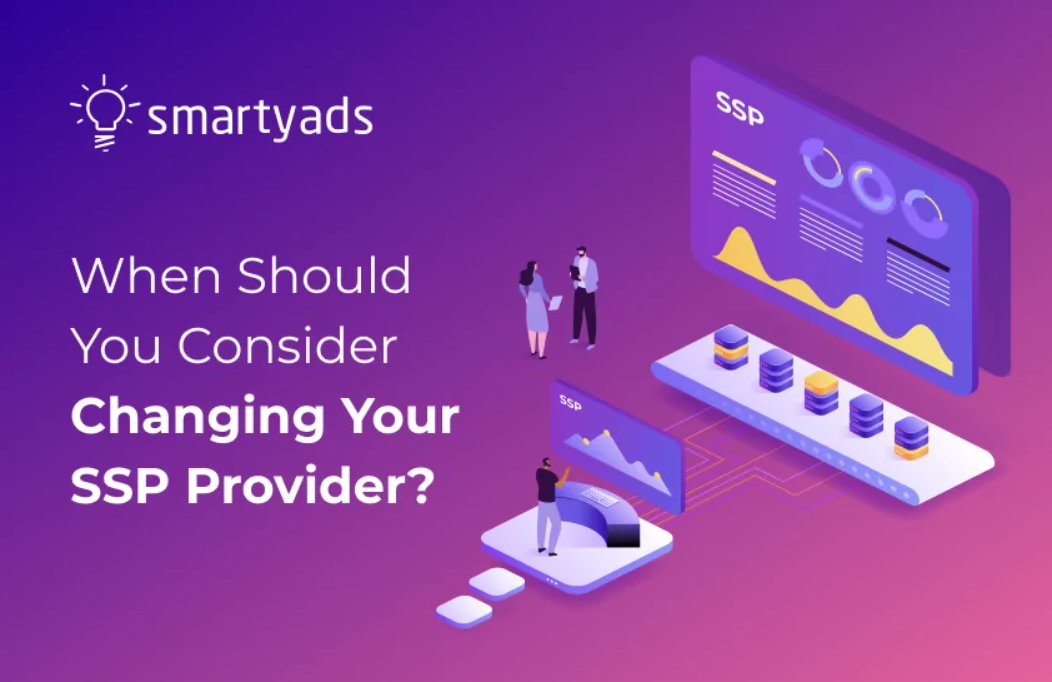Every brand is unique. Every business, even in a certain niche, has its own characteristics. This also applies to media platforms; each has its own features, which must be considered when working with content and thinking about monetizing such a platform.
One of the most convenient and reliable ways of monetization at the moment is cooperation with large SSPs (Supply-Side Platforms), which help automate marketing processes and select the best advertisers from those that may be suitable for a particular publisher.
However, there are times when a media company lacks the features or capabilities of an SSP to achieve all of its desired goals. Still, for the most part, this is working with a third-party service provider rather than your own platform.
So some companies may be thinking about changing their SSP or moving to their own solution or White Label platform. We'll discuss why this happens next.
Why did the media decide to change their SSP provider?
Control and service
When things aren't going well, your platform must adapt to the many market threats and opportunities; you may need expert help to respond to threats quickly enough. Good SSP platforms provide constant technical support to their customers.
Owning bidding technology gives an SSP platform the control and independence needed. It also saves you from putting your core business in the hands of other third-party companies.
Data Relevance
Having detailed, accurate, and up-to-date online data is the basis of every good solution.
An SSP that doesn't collect data sufficiently and doesn't analyze its raw data won't give you an accurate picture of your inventory performance.
In addition, this data is the basis for creating sophisticated algorithms that provide publishers with the highest possible profitability.
Security
It is very important to choose a platform integrated with ad fraud protection tools. These are usually anti-fraud algorithms developed by companies that specialize in cybersecurity. There are a huge number of such tools, and they are all aimed at improving different aspects of media selling. Be sure to ask the platform's representative how their product is protected from fraudulent traffic.
Taking care of the publisher's users
Attracting revenue by monetizing ad space is, of course, a good thing. However, it's also important not to forget about the user experience. If your site is cluttered with banners flashing and popping up from every corner, it will severely ruin the user experience and can be a huge reputational loss for your platform. Therefore, it is crucial that the SSP has the ability to customize sophisticated and native types of ads that will not annoy users but rather be an extension of their user experience.
Simple complexity
Ad formats are sometimes extremely difficult to manage. Some platforms make managing the placement of ad formats too complicated in an effort to provide the publishers with as much functionality as possible. Choose a platform that offers a wide range of functionality but doesn't forget about usability for users.
Bidding System
SSPs should provide a Header Bidding solution that is fast, reliable, and easy to implement. This technique allows publishers to sell their inventory based on impressions, giving them transparency as to how much their impressions are actually worth.
Header bidding can increase a publisher's revenue by 10-30%. The main disadvantage of header bidding on the client side is the latency that affects user experience.
Therefore, it is better to work with an SSP that has considered this when creating their header bidding solution and can respond to your bid requests in less than 200 milliseconds. If they have a server solution, this can be another great option to avoid web pages slowing down.
Are there solutions other than changing the SSP?
Of course, there are! You can always create your own platform for dealing with advertisers. Owning your platform gives you unlimited control over its functionality and operations.
However, building an entire platform from scratch can be too costly, especially if you don't own a huge business with space profitability. That's why you can use a White Label platform. It's essentially the same as a personal platform for a company, only made from a standard template that already has everything you need to run such a platform.
In addition, White Label allows you to customize the platform to your needs and preferences. You can choose the tools you need, customize the platform's appearance, and determine how the media selling will be organized!
How do I know that it’s time to change SSP?
All you need to do is answer a few questions! We have prepared a short guide to help you figure out if you need to change your platform or if the one you are using now is the best for you. You can download the guide for free here.




